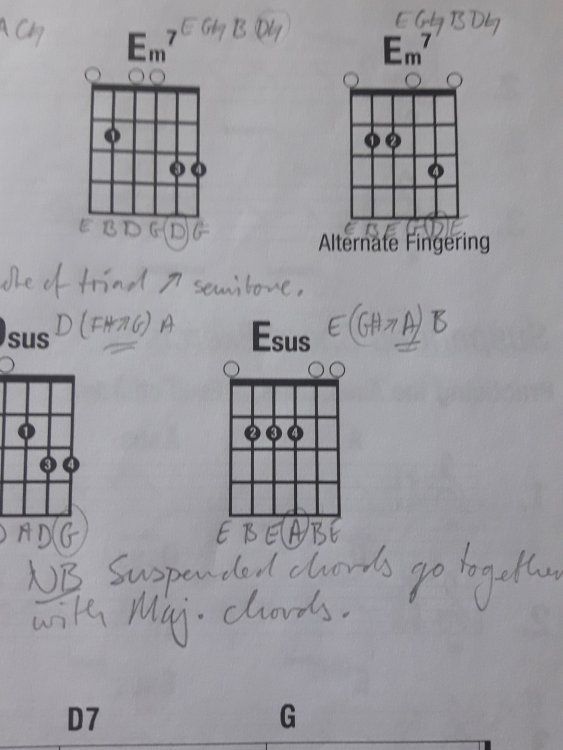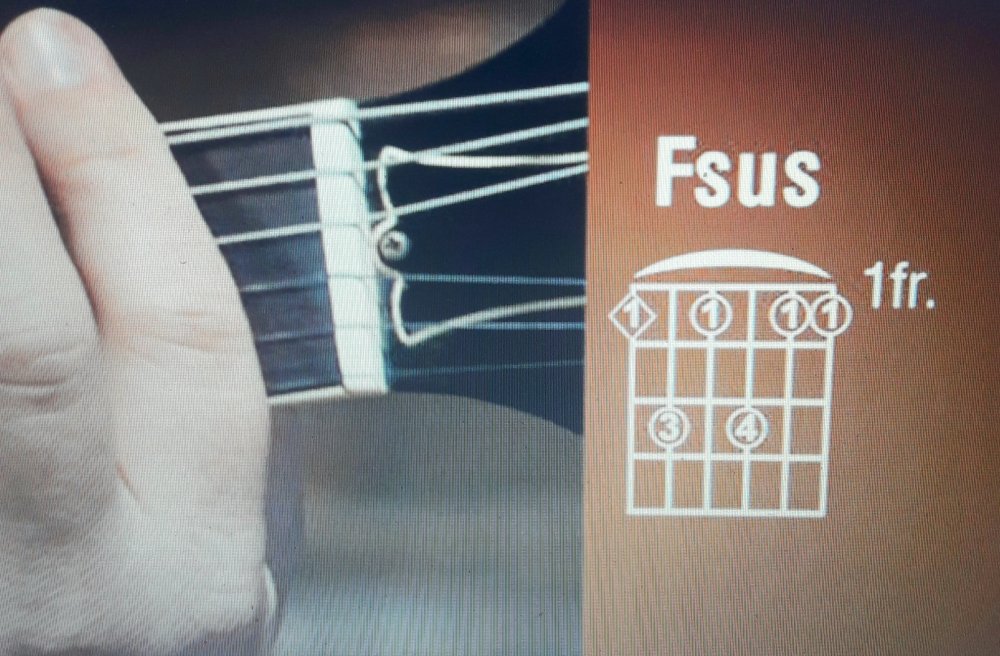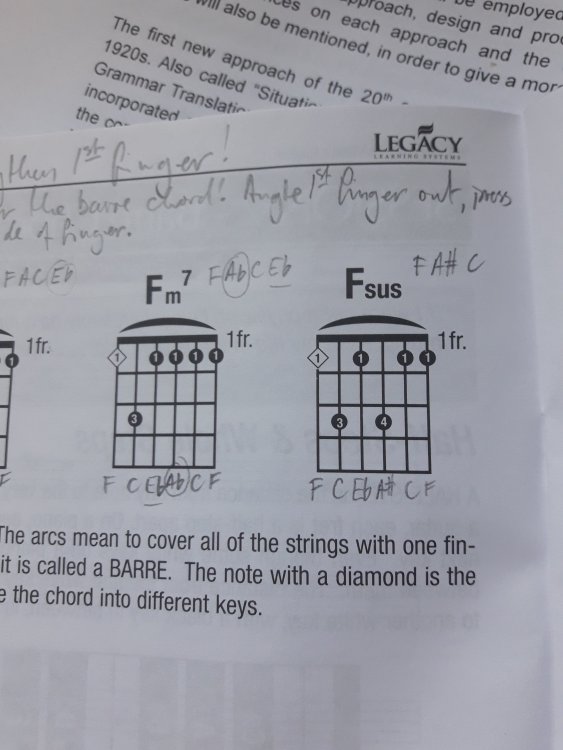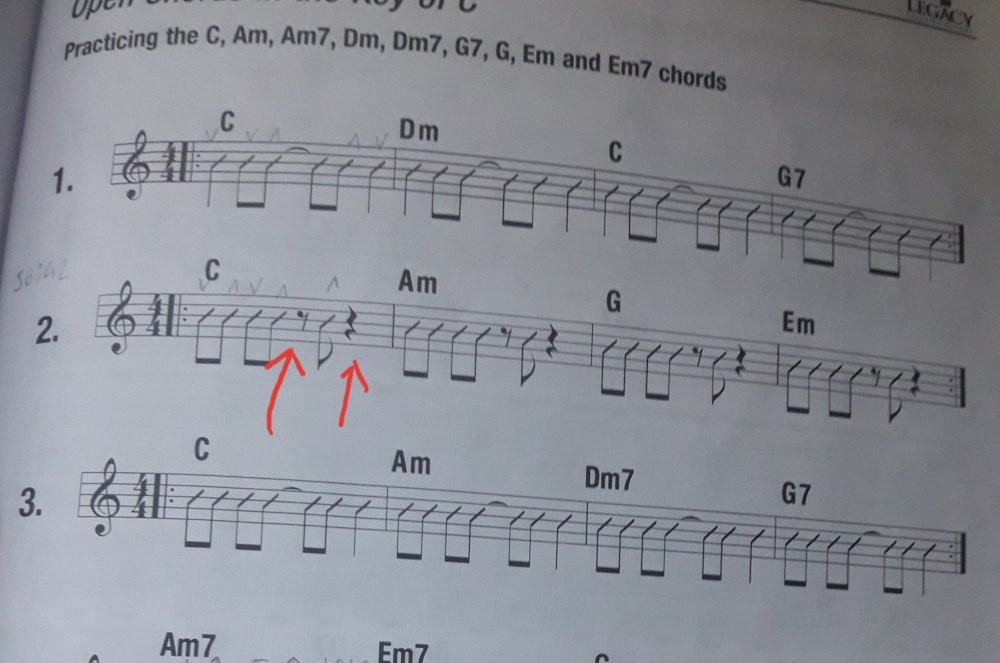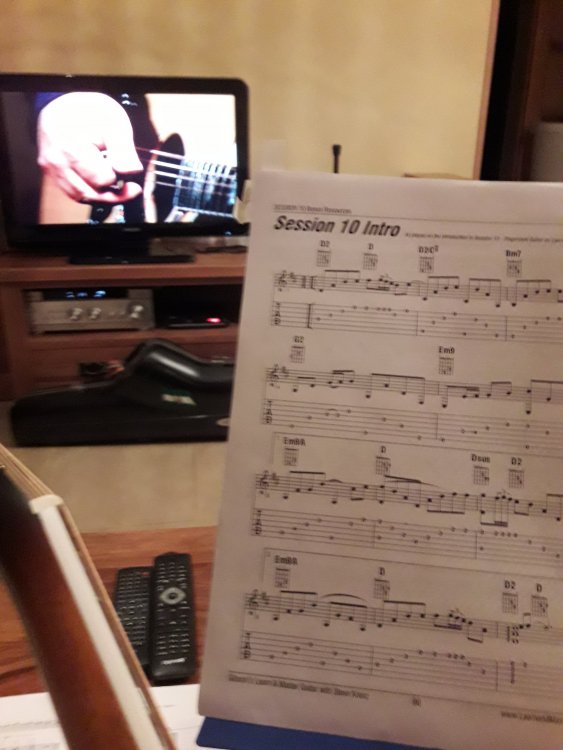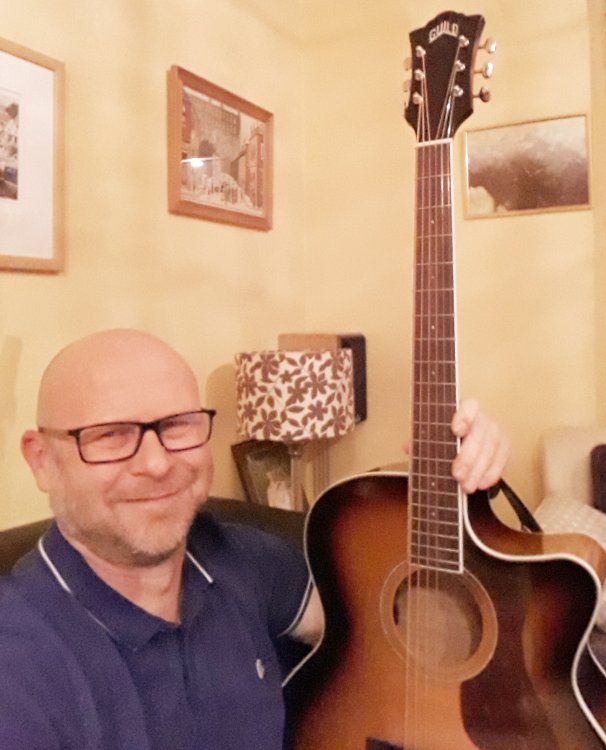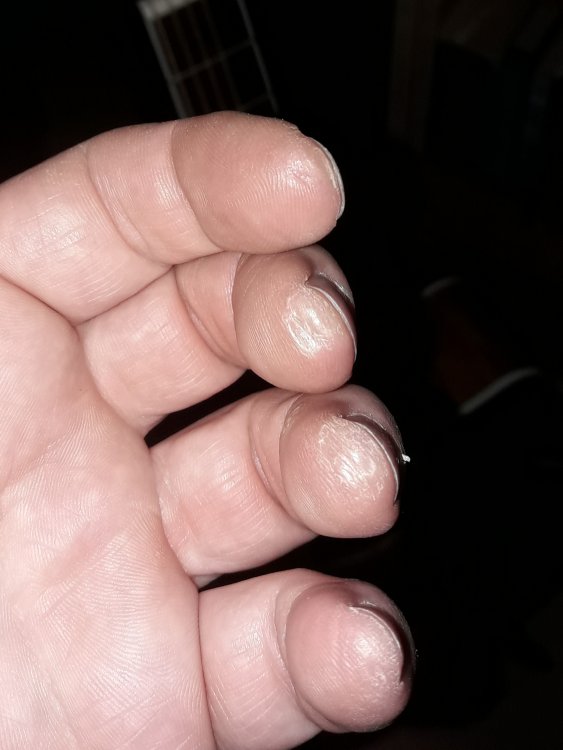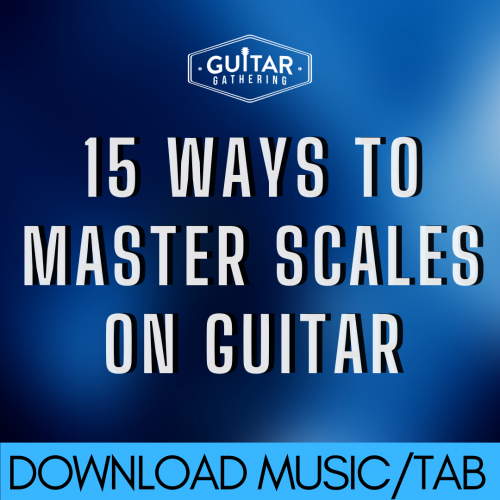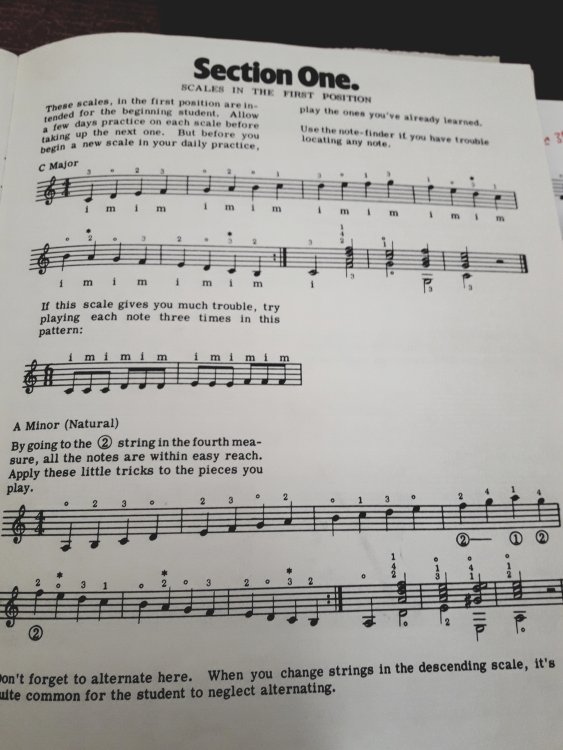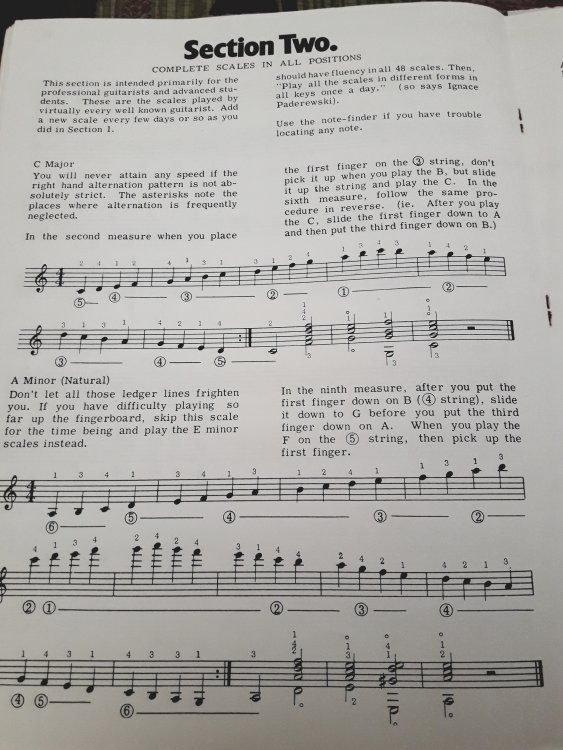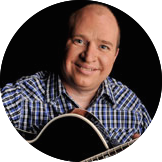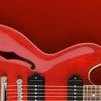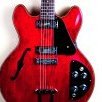-
Posts
24 -
Joined
-
Last visited
-
Days Won
3
Content Type
Profiles
Forums
Gallery
Events
Articles
Blogs
Downloads
Everything posted by Eduardo
-
OK, so in Session 10 Steve shows us the Thumb, 1st, 2nd, 3rd finger positions for finger-style playing (my favourite style by far!) and then the PIMA system for classical work. He talks about the Giuliani right hand exercises (I put them up in a different thread, they're available online for free), and says they're a really good resource. According to standard fingerstyle, the thumb hits the bottom three (EAD) strings where the 1st finger takes care of G, 2nd takes care of B and the 3rd takes care of E. At least until the end of Session 10. Maybe things get substantially more complicated than that later on! However, in Giuliani's studies (check out study 4, attached) the right hand moves up and down the guitar body and the thumb (p) hits the bottom note of each triplet, whatever string it's on, and the 1st and 2nd fingers (i and m) take care of the 2nd and third notes in each triplet, irrespective of the string that they're on. So in the first group of notes, C-E-G, it's p (thumb) on the C (5th string - A), i (1) on the E (4th string - D) and m (2) on the G, (3rd string, G). Effectively, the 1st and 2nd fingers have moved physically upwards (down in pitch) a string each. So, my question is this. If we're aiming for good fingerstyle technique, should we do this as Giuliani indicates or should we stick to "standard" and keep the thumb working the bottom three strings and leave the 1st, 2nd, and 3rd fingers on the G,B, and E strings respectively? If it's really hard to follow what I've tried to explain, then check out the photo. I pencilled in TT1, T12, etc above the notes to show what I mean by the standard right hand fingering. Incidentally, if anyone wants to know what P-I-M-A stands for, it's "pulgar" (thumb) "índice" (index) "medio" (middle) and "anular" (ring) in Spanish. I wish I could say that the Spanish invented the guitar but it was supposed to be the Arabs who brought it to Spain, like the Alhambra and the Mezquita of Córdoba... Thanks for your answers guys. I hope I haven't opened a can of worms.
-
Hi guys, I don't know if this has already been posted (I wouldn't be surprised if it has) but Steve made a reference to Giuliani's 120 Right Hand studies as a learning resource. They've been published onine for free in a pdf, and here's the site for them: https://www.classicalguitarshed.com/wp-content/uploads/2018/11/Giuliani-120-studies-for-right-hand.pdf If you can't be bothered surfing the web, I'll attach them as a pdf to this thread. Cheers! Eduardo. Giuliani Right Hand Studies.pdf
-
Sorry to pester you Diane, can you explain a bit more about the sus2 chords to me? I'm checking out the chords chart and on page two, I'm "spelling" the chords out. So the 3rd in the triads go down a tone: A2 goes from A-C#-E down to A-B-E, D2 goes from D-F#-A down a full step to D-E-A, and G2 goes from G-B-D to G-A-D. Why's it called "suspended" then? If a suspended 4th goes up a semitone, yet a suspended 2nd goes down a whole tone? I don't get it. It sounds cool though! In fact, it sounds kind of "unfinished". It needs to end on a Major chord. Is this what musicians mean when they talk about "tension" and "resolution"? I really appreciate your input Diane. Thanks for taking the time. Eddy.
-
Diane! Long time no see! Thanks for that - of course, it's all coming back now. There's no such thing as a sharpened Major 3rd, because it automatically becomes a perfect 4th. Which is why it's not A# in the Fsus chord, but Bb. (As well as A# not existing in the scale of F Major). Thanks for explaining the "sus4" bit - I never twigged on to that. I owe you one. I started learning proper theory a couple of years back with an absolute diamond of a professional musician (sax, tuba, and piano player) but then the pandemic hit and the poor guy was too afraid to keep coming round for classes. He's now at University studying Schoenberg and Poulenc... I need to get back studying theory, or I'll be forever limited to the ranks of "amateur annoying Dad that no-one wants to listen to" !!! Oh, and don't for a minute think I was being critical of Steve, I wouldn't dream of it. Even though I've never met the guy, I know he's put his life's work into helping people learn music, and if he's made omissions, it'll be for a good reason. Thanks for the chart. It's getting printed off and pinned to the bedroom wall for just as long as my wife is away working!
-
Hi compañeros, I hope you're well. I want to ask a theory question. On page 37 of the Gibson Learn and Master series, we got taught the Esus chord which is just like the open E Maj chord with the 3rd #-ed up from G# to A natural. (Photo attached with my scribbling). Then on page 44, Steve shows us the Fsus chord which is just the same as the Fm7 next to it but with the pinky slid up on the G-string to an A#. Cool, the 3rd is #-ed a semitone (half-step to the US players). BUT!!!! we've still got an Eb in there, which is a flattened 7th in the F Major scale. So, rather than a Fsus chord which I guess should be F A# C, we've got F A# C Eb. Doesn't that make it a Fsus7 ? I'm no genius on music theory or harmony, so can someone who knows what they're talking about tell me the answer? I would have assumed the Fsus would be identical to the Esus played with 1st finger barre a semitone (half-step) higher, i.e. on the 1st fret. F-C-F-A#-C-F, not F-C-Eb-A#-C-F as shown on page 44. Also, my apologies if this is already covered in another thread, only I haven't found it. Saludos desde Madrid. Eddy.
-

Session 6 Minor 7 Chord Exercises and Rests
Eduardo replied to Achilles Wrath's topic in Gibson's Learn & Master Guitar
Dude! I have the answer! At 42:40 on the video of Session 6, Steve uses the heel of his strumming hand to mute the strings, so I guess it's a legitimate technique! Thank God, that's how I've been doing it for donkeys' years! -

Session 6 Minor 7 Chord Exercises and Rests
Eduardo replied to Achilles Wrath's topic in Gibson's Learn & Master Guitar
Hi Achilles, I was about to ask the same question as you because I'm going through the old chapters from the course to revise my technique, and on the video I see Steve doesn't mute the strings with his picking hand during the rests as well, so effectively, the last chord played just rings through. I guess he does this so as not to confuse younger learners, but I'm guessing that to do it right, you have to use your fretting hand so the picking hand keeps going through the down/up/down/up cycle. Can anyone throw some light onto this for me? (On the video of Chapter 6 this is at 36:42, and it's on page 39 of the Lesson book. -
Thanks Mark. I do almost exclusively play acoustic, so that's probably the cause of it. I spend at least an hour a day doing scales, barre chord exercises, and working through Steve Krenz's Learn and Master course, concentrating on the fingerpicking material. I love the advanced chords exercises, but I can't get my fingers to stretch to the G2 on page 67! Mind you, I thought the E2 on the same page was almost impossible, and there's not much between them... The scales have sort of peeled off now, and I'm left with kind of raised pads, a bit like our family German Shepherd who is lying faithfully at my feet as I'm typing this! Now my major problem is disciplining myself to stay off the guitar and keep working for a set of State exams for teachers that I have coming up in June. I guess if I play the guitar until it hurts, and then do some study until I get utterly bored, then swap back to the guitar, I can avoid blisters, become a wicked guitarist, and pass my exams all in one go!
-
I'm in the same boat. I can't grow my nails because it's impractical, but one of my friends is a professional classical guitarist and he has amazing nails. So I guess it boils down to what you expect from the guitar. If you want to perform in public and a bright tone is important, or if you're just playing for your own pleasure. (That's me.) One possible solution may be to play without nails but use an amplified acoustic if you need some projection?
-
"The man that hath no music in himself, Nor is not moved with concord of sweet sounds, Is fit for treasons, stratagems, and spoils; The motions of his spirit are dull as night, And his affections dark as Erebus. Let no such man be trusted." - Lorenzo to his lover, Jessica, in The Merchant of Venice, Act V Scene 1. And that was a hundred and fifty years before Bach was composing! I'm giving my fingertips a rest, and reading some Shakespeare. Has anybody seen a more eloquent defence of the value of music than that?
-
Thanks bro, I have to admit, I did wonder that myself. Oh well, I suppose the great orchestral musicians of the 18th and 19th Centuries never had recordings of Mozart's or Beethoven's work and they would still have made beautiful performances from only the sheet music, so I'll have to go old school and put some elbow grease into it!
-
Hey Fretless, you're right, we have enough instruments to fit out an entire band, but in my defense, they're spread between me and our two kids. My son's the trombonist, but he's hit the typical 12 year old "I hate music and anything that requires a bit of effort" stage, so we may be sharing instruments between just my daughter and myself soon! And yes, the Guild was an inspired choice, I was playing it all yesterday afternoon instead of doing next week's lesson planning!
-
My daughter started playing last month. What could go wrong apart from the fact that she's 15? She's left handed, so I strung an old 3/4 size Ibanez upside down for her and for the moment she's on that. Last weekend she decided to try out my "right handed" Cort M600T. Watch to the end, where she finds out what the Gain dial does. VID-20210227-WA0005.mp4
- 1 reply
-
- 1
-

-
I'm jealous of you William, (for living close to Nashville). But Spain is also a guitar heaven, just a different style. I can get back into my wife's good books quite cheaply though, as she's not a musician. All I have to do is get busy in the kitchen because she loves my cooking! That's another thing we are blessed with in Spain - this is the home of good food and good wine, speaking of which it's dinner time over here. 😋
-
Hi guys, I'm working through the Session 10 Intro score in the Bonus Materials book. I love this track, but I can't find the audio anywhere! It says Session 10 intro, but the intro on my DVD is Pachelbel's Canon on D. Am I missing something? Can anyone tell me where to listen to, or better still, watch Steve's fingering on this track?
-
I got this course about ten years ago but I had just started learning saxophone and ended up centring on that instrument. Now I'm taking advantage the lockdown to get my money's worth out of this course. I'm really enjoying it and it's filling in a lot of gaps in my knowledge. It's by no means limited to beginners, intermediate players can get a lot out of it as well.
-
Hey guys, here's a cautionary tale for you. I went to a very good guitar shop in Madrid last week (Málaga8) to check out some mid range acoustic guitars, as I wanted to upgrade from my trusty Yamaha LW-5 that I bought new some 26 years ago. I felt that the bottom end was a bit lacking and I wanted something with a bit more punch. After spending many hours carefully comparing different models I made a surprise decision and took a Guild F-250 CE, a lovely sunburst jumbo design with cutaway and built in microphone. The strings were in bad shape from the transport, the top E and B were rough, but they put a new set of d'Addarios on for free and the thing just sings! I never considered a jumbo because I like the "manly" shape of dreadnoughts, but it just sits so well on my knee and sounds gorgeous, so I said "what the heck" and took it. €570, I thought I would put it on the credit card and pay it off over six months, so my wife wouldn't notice. After all, we already have 7 guitars, 5 saxophones, 4 flutes, 2 trombones and 2 keyboards. I think she's right when she says we have more than enough instruments in the house! In the end I felt so bad about cheating on her in this manner that I actually went to confession about it. Anyway... driving back from work today I got a call... "cariño, did you spend a lot of money last week in a music shop? You wouldn't happen to have got a new guitar would you?" So, my infidelity is out in the open. But do you know what? She said it didn't matter, and she still loves me! The moral of this story is to be up front with the most important person in your life, because he/she will probably not mind anyway, especially if he/she loves you and understands your passion for music!
-

Are classical scales the way to learn the fretboard?
Eduardo replied to Eduardo's topic in Guitar Playing & Technique
Diane and Wim, thanks for the input, that's three weeks since I asked, and I can happily confirm that by learning my scales minimum half an hour a day in the open position and up and down the fretboard, using musical score to relate the notes to their positions, combined with a "note finding" exercise, I'm making massive progress (as well as battering my fingers!) The note finding exercise consists of playing any random note and then looking for all the corresponding notes, octave up and down, in all positions on the fretboard. This seems funnily equivalent to the harmonics exercises on saxophone and flute. (The difference is that the guitar tortures your fingers whereas the sax tortures your cheek and mouth muscles!) -
I really like Rick Beato's work. If I wasn't committed to Steve Krenz's programme I would get his book. Maybe once I've worked through all Steve's material I will, but I've learned from experience that it's a bad idea to disperse your learning efforts.
-
Hi, About a month ago I restarted learning the guitar from scratch in order to consolidate everything I had picked up over the years. I'm playing about an hour a day, mainly steel strung acoustic, and the ends of my fingers on my fretting hand have gone all scaly. It doesn't hurt and they're not peeling but I'm developing these pads of dead skin and losing the fine sense of touch at my fingertips! This is having unfortunate results as I now tend to miss strings or finger them badly. Is this commonplace? Will it go back to normal given time or will I just have to get used to it?
-
I love these exercises. They're so similar to modern scales approaches for other instruments - my son is learning the trombone and his teacher uses a very similar technique, especially teaching scales in intervals - in fact, they do them in all intervals from thirds right through to sixths. The Switchbacks exercise reminds me of a series of exercises by Chad Lefkowitz Brown (a tenor saxophonist) on approach notes.
- 8 comments
-
- guitar
- major scale
-
(and 2 more)
Tagged with:
-

Are classical scales the way to learn the fretboard?
Eduardo replied to Eduardo's topic in Guitar Playing & Technique
Thanks Diane and Wim, those are quite insightful and intelligent answers. Diane, are you a teacher by any chance? Your answer is making me do a bit of reflexion on my own learning, and that is straight out of a teacher-training manual! Luckily, a very good friend of mine is both a professional guitar teacher and composer - and he's not pigeon-holed into any particular style, as he plays everything from heavy metal to flamenco, and he's a master at it all. I hadn't really paused to ask myself where I wanted to go with the guitar - I know that I don't really want to play classical because I get my fill of baroque and classical music on the flute which I've been playing over 40 years. I love listening to fingerstyle acoustic playing - Molly Tuttle is amazing, and I am a huge Jazz fan, so I guess that's probably the natural course for me. I guess there'll be no getting away from studying some seriously intense music theory and learning properly about harmony, but that's no big deal, it's time I got to grips with that. Incidentally Wim, I listened to the recording that's embedded into your signature, and I really enjoyed it. Thanks for sharing this. I guess I'll carry on learning the scales from the book as it can't do any harm, and use it as an accompaniment to Steve's course which I'll use as the "bread and butter" of my learning for the moment. Once I've finished the Learn and Master course I'll get hold of my teacher friend Dani and get some technique lessons and some ¿how can we call it? - "cultural direction" from him, and possibly back it up with the fretboard workout from Steve Krenz. Thanks for your feedback guys. -

Are classical scales the way to learn the fretboard?
Eduardo replied to Eduardo's topic in Guitar Playing & Technique
I'm outraged! In America this costs $3.50 on Amazon (second hand, as it's out of print) and in Europe we get fleeced for €13.17 best offer, plus postage !!! You guys are so lucky over there in the USA, not only are Gibsons cheaper there, but even the scales books cost you less! -
Hi, I wonder if I'm barking up the wrong tree here. I have what I think is a really good scales primer from the mid 1980s that has all the major and their relative natural, melodic, and harmonic minor scales in both the open positions and then all other positions up the fretboard. Here it is on amazon: https://www.amazon.com/-/es/Harvey-Vinson/dp/0825621380 They're all written out in proper treble clef musical notation, no tabulature, so I'm obliged to relate the note on the fretboard to the position on the stave. Where it's important to know which string to play the note on, there's an indication in standard (classical) notation under the stave. There are even four really funky chords finishing off each scale that provide a gorgeous flourish that makes practicing them fun! I've recently returned to studying the guitar after a 15 year break (birth of kids, and other musical commitments as I also play woodwind and brass).Now I'm going through the scales book from the beginning and I find it's helping me learn the fretboard and the relationship between the notes - in woodwind and brass, scales practice makes up at least 20 percent if not more of our practice time, and on the tenor sax I put in hours doing chords (yes, you can play them on a wind instrument, just one note at a time!) Early on in Steve Krenz's Learn and Master series he says that we shouldn't bother with the melodic and harmonic minor scales, and then in lesson 11 we're taught the 5 shapes of the pentatonic scale. I'm worried that if I only learn the shape of the pentatonic scale I'm never going to relate the positions on the fretboard to the actual note values. Am I missing something important here? I'm sure that Steve would not teach us bad practice, so perhaps I'm misunderstanding something. Am I wasting my time learning the "classical" way with the scales, and should I rely on Steve's 5 pentatonic patterns or is playing scales while reading the music a valuable exercise, and will it make me a more accomplished guitarrist?




